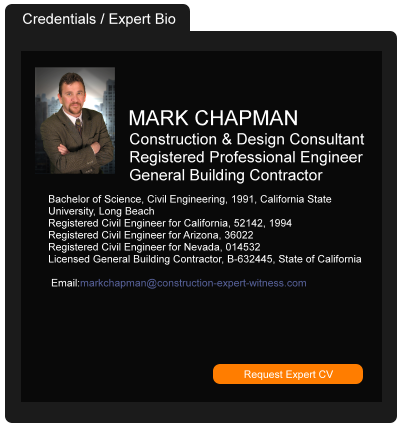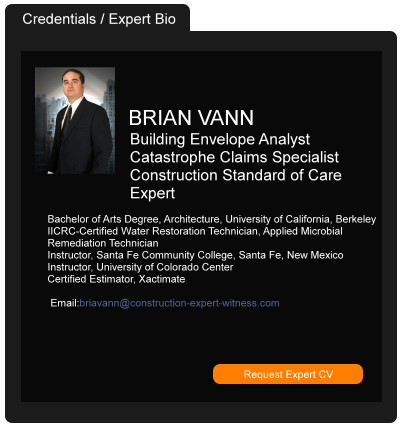Texas Supreme Court to Rehear Menchaca Bad Faith Case
January 10, 2018 —
Sean P. Mahoney – Complex Insurance Coverage ReporterOn December 15th, the Texas Supreme Court agreed to revisit its April 7, 2017 decision in
USAA Texas Lloyds Co. v. Menchaca, No. 14-0721, a “bad faith” case arising out of Hurricane Ike damage, in which the court held that a policyholder could potentially recover policy benefits for statutory bad faith under Texas law, even though a jury concluded that the insurer did not breach the terms of the policy, if the policyholder could show that she was nevertheless entitled to the benefit. The decision to rehear this matter comes at the urging of insurers and interested groups, including the Insurance Council of Texas and the U.S. Chamber of Commerce, who argued that the April 7, 2017 ruling substantially unsettled Texas insurance law.
Menchaca is a first-party property insurance coverage case. After Hurricane Ike struck in 2008, plaintiff Menchaca submitted a claim under her homeowners policy to USAA. A USAA adjuster later concluded that Menchaca’s property suffered only “minimal damage” that fell below the deductible. Menchaca sued claiming breach of contract and unfair claims settlement practices in violation of the Texas Insurance Code. As damages, she sought only the policy benefit, court costs, and attorneys’ fees.
Read the court decisionRead the full story...Reprinted courtesy of
Sean P. Mahoney, White and Williams LLP Mr. Mahoney may be contacted at
mahoneys@whiteandwilliams.com
Miller Act CLAIMS: Finding Protections and Preserving Your Rights
November 29, 2021 —
Diana Lyn Curtis McGraw - ConsensusDocsThe Miller Act (the “Act”), which requires the prime contractor to furnish a performance bond and a payment bond to the government, protects “all persons supplying labor and materials carrying out the work provided for in the contract.”[1] Despite its broad language, courts have limited the parties who may actually assert a claim under the Act. This article introduces general background of the Act, identifies subcontractors who may qualify for protections under the Act, and suggests ways to preserve the rights as prime contractors.
Brief Background of the Miller Act
Under the Miller Act, there are two types of bonds the prime contractor furnishes to the government in a federal construction contract of more than $100,000[2]
1. Performance Bond
A performance bond protects the United States and guarantees the completion of the project in accordance with the contract’s terms and conditions.[3] This bond must be with a surety that is satisfactory to the officer awarding the contract and in the amount the officer considers adequate for government protection.[4] If a contractor abandons a project or fails to perform, the bond itself will cover the government’s cost of substitute performance. Thus, the performance bond disincentivizes contractors from abandoning projects and provides the government with reassurance that an abandonment will not create delays or additional expenses.
Read the court decisionRead the full story...Reprinted courtesy of
Diana Lyn Curtis McGraw, Fox Rothschild LLPMs. McGraw may be contacted at
dmcgraw@foxrothschild.com
Court of Appeals Discusses the Difference Between “Claims-Made” and “Occurrence-Based” Insurance Policies
May 31, 2021 —
Garret Murai - California Construction Law BlogAs most contractors know, scope, price and time are the “big” three in any construction contract. Nearly as important, however, are the insurance provisions. Patricularly, when things go bad on a construction project. As the next case, Guastello v. AIG Specialty Insurance Company 61 Cal.App.5th 97 (2021) discusses, the difference between “claims-made” versus “occurrence-based” coverage can be extremely important.
The Guastello Case
In 2003 and 2004, subcontractor C.W. Poss Inc. built retaining walls in the Pointe Monarch housing development in Dana Point, California. Poss performed all related excavation, ground and grading work.
In 2006, Thomas Guastello purchased a home in the development, and in January 2010, a retaining wall close to his lot suffered a massive failure that causing over $700,000 in damages.
Read the court decisionRead the full story...Reprinted courtesy of
Garret Murai, Nomos LLPMr. Murai may be contacted at
gmurai@nomosllp.com
Gordon & Rees Ranks #5 in Top 50 Construction Law Firms in the Nation
June 29, 2020 —
Gordon Rees Scully MansukhaniGordon Rees Scully Mansukhani has been ranked the #5 construction law firm in the nation by Construction Executive in the magazine’s 2020 ranking of The Top 50 Construction Law Firms. Gordon & Rees is the only California-based law firm to rank in the Top 25.
The firm was ranked in the Top 10 in more specific areas as well.
- #1 in the Top 10 Law Firms Ranked by Most Locations
- #2 in the Top 10 Law Firms Ranked by Number of Construction Attorneys
- #6 in the Top 10 Law Firms Ranked by Number of States Admitted to Practice
“With offices throughout the nation and outstanding construction attorneys in many of those offices, we are able to offer our construction clients a diverse range of legal services wherever they do business,” said
Ernie Isola partner and co-chair of the firm’s construction practice group.
Read the court decisionRead the full story...Reprinted courtesy of
Gordon Rees Scully Mansukhani
National Engineering and Public Works Roadshow Highlights Low Battery Seawall Restoration Project in Charleston
April 29, 2024 —
Engineering and Public Works RoadshowCHARLESTON, SC — On Thursday, the nationwide Engineering and Public Works Roadshow stopped at the Low Battery Seawall Restoration Project in Charleston. The event highlighted the role engineers and public works professionals play in infrastructure projects like the local seawall improvements that increase coastal resiliency along the historic urban shoreline.
The event, which took place along the newly constructed battery wall section between King Street and Battery Place along Murray Boulevard, marked the latest stop of the Engineering and Public Works Roadshow – a joint effort by the American Council of Engineering Companies, the American Public Works Association, and the American Society of Civil Engineers to bring public attention to the essential role engineers and public works professionals play in making our modern world possible.
The battery project underscores the importance of innovative engineering solutions in addressing the challenges of climate change and rising sea levels. Thursday's event was also a chance to spotlight the engineering, construction, and public officials involved in the project, whose work often goes unrecognized.
About the Engineering and Public Works Roadshow: The Engineering and Public Works Roadshow is a series of nationwide events highlighting critical infrastructure projects and the skilled professionals who make them possible. It is an opportunity to learn about the importance of infrastructure investment, showcase the work of engineers and public works professionals, and celebrate these projects' positive impact on our communities. Learn more at www.infrastructureroadshow.org.
Read the court decisionRead the full story...Reprinted courtesy of
White and Williams Defeats Policyholder’s Attempt to Invalidate Asbestos Exclusions
January 28, 2014 —
White and Williams LLPWhite and Williams attorneys scored a significant victory for the insurance industry on January 15, 2014, when a federal jury of four men and four women rejected a policyholder’s novel efforts to invalidate asbestos exclusions contained in insurance policies issued between February 1, 1979 and August 1, 1985.
In General Refractories Co. v. First State Ins. Co., Civil Action No. 04-CV-3509 (E.D. Pa.), General Refractories Company contended that asbestos exclusions in insurance policies issued by various insurance companies in the late 1970s and 1980s had not been submitted to the Pennsylvania Department of Insurance for approval prior to use and, therefore, were unenforceable. Holding a failure to obtain approval, by itself, would not be sufficient to render the exclusions unenforceable, the Honorable Edmund Ludwig sent the matter to trial to determine whether the Pennsylvania Insurance Commissioner implemented a policy that was uniformly executed by the Insurance Department to disapprove all asbestos exclusions between February 1, 1979 and August 1, 1985, such that the exclusions violated a “dominant public policy.”
Reprinted courtesy of Gregory LoCasale, White and Williams LLP
and
Patricia Santelle , White and Williams LLP
Ms. Santelle may be contacted at santellep@whiteandwilliams.com and Mr. LoCasale may be contacted at locasaleg@whiteandwilliams.com.
Read the court decisionRead the full story...Reprinted courtesy of
Three Firm Members Are Top 100 Super Lawyers & Ten Are Recognized As Super Lawyers Or Rising Stars In 2018
July 28, 2018 —
Scott MacDonald - Ahlers Cressman & Sleight PLLCWith the Fourth of July festivities still ringing in our collective ears, we are having our own celebration at Ahlers Cressman & Sleight PLLC. We avoid using this blog as a platform for self-promotion as we want to keep relevant construction industry news and notes hitting your inboxes. Longtime readers will know, however, that we make an exception to recognize the Super Lawyers of the firm, who are each humbled to receive this peer-voted award. We also share this news in recognition of our clients and industry-partners who have put their trust and confidence in us. Without these relationships, these industry acknowledgments would have no significance.
Super Lawyers is a wholly independent company that identifies outstanding lawyers in the profession. It selects attorneys using a patented multiphase selection process based on legal excellence, industry involvement, and civic leadership. Super Lawyers’ initial pool of candidates is based on peer nominations and evaluations from outside the firm, which is then combined with Super Lawyers’ own third-party research. Only five percent of all lawyers in Washington State are selected for the honor of Super Lawyers and no more than 2.5 percent are selected for the honor of Super Lawyers Rising Stars. What makes this award meaningful is it is based upon evaluation of individual merit—as opposed to a “pay-to-win” award.
John P. Ahlers, one of the firm’s founding partners, is again recognized as one of the 10-Best Lawyers in the State of Washington across all practicing industries.
Founding partner Paul R. Cressman, Jr. and partner Brett M. Hill are also recognized as two of the 100-Best Lawyers across all practicing industries in Washington State.
In addition, three other firm members are also recognized as Super Lawyers: Founding partner Scott R. Sleight, Bruce A. Cohen (of counsel), and Lawrence S. Glosser (partner). In addition, Ryan W. Sternoff (partner), Lindsay (Taft) Watkins (partner), Ceslie A. Blass (associate), and Scott D. MacDonald (associate) were selected as Super Lawyers Rising Stars. Well over half of the firm’s lawyers received Super Lawyers distinction.
Read the court decisionRead the full story...Reprinted courtesy of
Scott MacDonald, Ahlers Cressman & Sleight PLLCMr. MacDonald may be contacted at
scott.macdonald@acslawyers.com
The Business of Engineering: An Interview with Matthew Loos
July 15, 2019 —
Aarni Heiskanen - AEC BusinessMatthew Loos is an experienced project manager in the civil engineering industry. He works as a project engineer at Jones|Carter in Fort Worth, Texas. In this interview, we discuss Matt’s new book, The Business of Engineering.
It is not very common that an engineer writes a non-technical book. What inspired you to do so?
Have you ever gotten an idea stuck in your head that you just couldn’t let go of? A time when you couldn’t go to sleep because the idea was consistently begging for your attention?
That’s what happened to me. The idea for this book hits me right before bed, as most good ideas do. I couldn’t go to sleep after the idea struck me. I spent half of the night writing the chapters of this book in my mind. I had been thinking about the idea of engineering and how it relates to other career fields, even the non-technical ones. I was disenchanted with the trifling number of classes I took that prepared me for the business world. These were the initial thoughts that eventually led me down the road into thinking about engineering as a profession going forward.
Read the court decisionRead the full story...Reprinted courtesy of
Aarni Heiskanen, AEC BusinessMr. Heiskanen may be contacted at
aec-business@aepartners.fi


































































